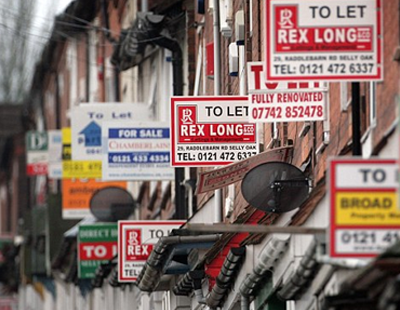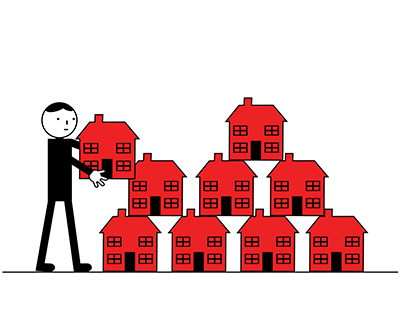 Rents look set to rise over the next 12 months as the supply of new rental properties dries up, according to the latest survey by the Royal Institution of Chartered Surveyors (RICS).
Rents look set to rise over the next 12 months as the supply of new rental properties dries up, according to the latest survey by the Royal Institution of Chartered Surveyors (RICS).
It said small scale landlords are pulling out of the market due to recent tax and legislative changes which have made buy-to-let investments less profitable.
Landlord instructions remain in decline, with this indicator having been stuck in negative territory since 2016.
Going forward, rents are expected to increase as a consequence of the imbalance between rising demand and falling supply.
In the sales market, activity levels are benefiting from greater political certainty following the outcome of last month’s general election.
There has been a notable increase in residential property sales and this trend is likely to continue for the foreseeable future.
The December 2019 RICS Residential Market Survey shows that sales expectations have increased significantly, with a number of other key activity metrics turning positive for the first time in several months.
Sales expectations for the next 12 months have increased to a net balance of +66%, up from +35% in November, following a sharp rise in enquiries from potential buyers.
This change in activity levels is expected to lead to property price growth in the near and longer-term due to continued imbalance in supply.
In December, 17% more survey respondents saw a rise rather than fall in enquiries from new buyers, up from -5% in November, at the headline level across the UK.
Regionally, the majority of areas saw growth in interest from new buyers, with respondents in Wales and the North East in particular reporting solid growth.
Enquiries also rose in London and the South East, marking a noticeable turnaround from the negative results in November.
Aside from a rise in enquiries from buyers, the number of agreed sales edged up at the national level to +9% net balance. This is the first time since May 2019 that the number of agreed sales has shown a positive result.
Agreed sales in London and East Anglia delivered amongst the strongest improvement in sentiment, with net balances of +22% and +23% respectively, while sales reportedly weakened in Northern Ireland and Scotland.
Sales expectations for the next three months are also positive, for the third month running, with +31% of respondents anticipating transactions will increase.
This sentiment is mirrored for sales prospects over the 12 twelve months, which have seen an even greater improvement.
A net balance of +66% of survey participants forecast that sales will rise in the year ahead, up from +35% previously. The strongest net balances were returned in Wales and the South West, although all regions are showing strong improvement.
Simon Rubinsohn, RICS chief economist, commented: “The signals from the latest RICS survey provides further evidence that the housing market is seeing some benefit from the greater clarity provided by the decisive election outcome.
“Whether the improvement in sentiment can be sustained remains to be seen given that there is so much work to be done over the course of this year in determining the nature of the eventual Brexit deal.
“However, the sales expectations indicators clearly point to the prospect of more upbeat trend in transactions emerging with potential purchasers being more comfortable in following through on initial enquiries.”
While new instructions picked up at the national level, a net balance of +9% of contributors reported an increase, outside London and the South East, new sales instructions were more or less flat rather than picking up to any degree.
With regards to house prices, the survey’s headline net balance came in at -2%, compared to -11% previously, signalling a broadly flat national trend for the time being.
Going forward, however, near term price expectations were revised higher in all parts of the UK. This indicates a large shift across previously weakening areas, such as London and the South East.
Back at the national level, a net balance of +61% of survey participants see prices increasing at the twelve month horizon (a rise from +33% last time). What’s more, the outlook for house price inflation was adjusted higher right across the UK.
Rubinsohn added: “The ongoing lack of stock on the market remains a potential drag on a meaningful uplift in activity although the very modest increase in new instructions in December is an early hopeful sign.
“Given that affordability remains a key issue in many parts of the country, the shift in the mood-music on prices is a concern with even London expectations pointing to a reversal of course both over the coming months and looking further out.
“This highlights the critical importance of the government addressing the challenge around housing supply particularly with the gradual phasing out of the Help to Buy incentive.”



 Rents look set to rise over the next 12 months as the supply of new rental properties dries up, according to the latest survey by the Royal Institution of Chartered Surveyors (RICS).
Rents look set to rise over the next 12 months as the supply of new rental properties dries up, according to the latest survey by the Royal Institution of Chartered Surveyors (RICS).



 A new landlord organisation, which is the largest ever trade body in the letting sector, has been officially launched.
A new landlord organisation, which is the largest ever trade body in the letting sector, has been officially launched.
